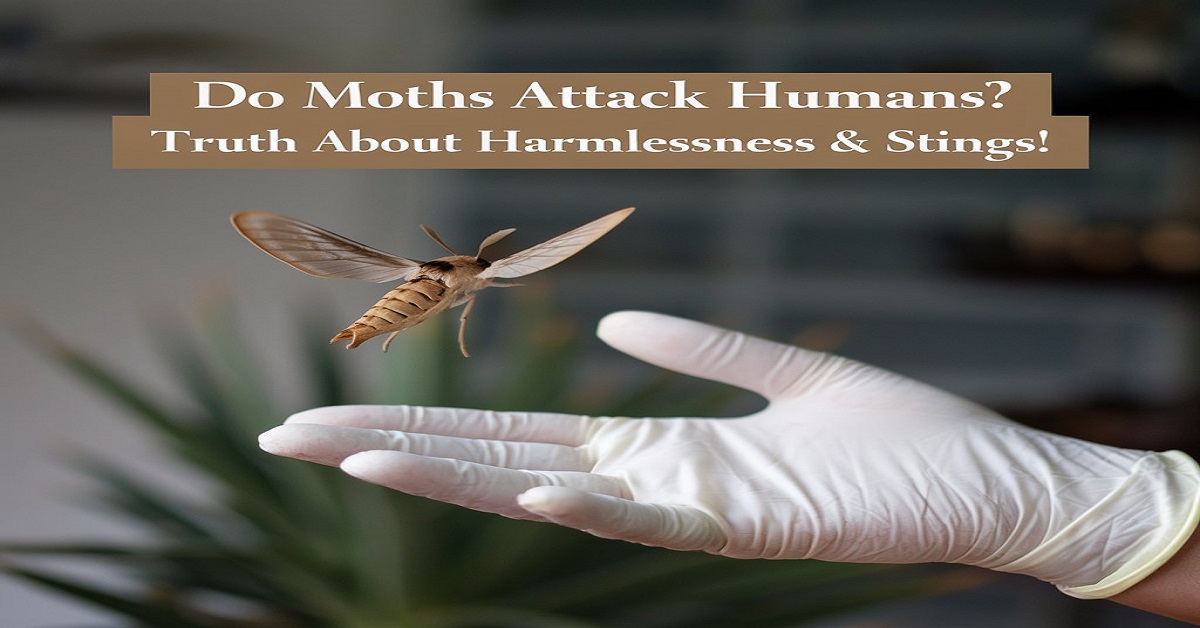Moths—those soft, fluttering creatures that seem to appear out of nowhere—have sparked both curiosity and fear in many people. Whether they’re flying around a porch light or accidentally bumping into us while we’re indoors, moths often make their presence known. But when it comes to questions like “Do moths attack humans?” the answers can get a bit murky. Are they dangerous?
Should we fear them? Let’s dive into the truth about moths and uncover their behavior, debunk common misconceptions, and explore whether they can truly harm us.
Here’s a table summarizing the key facts and figures from the article:
| Fact/Topic | Details/Information |
|---|---|
| Scientific Classification | Moths belong to the order Lepidoptera along with butterflies. |
| Size of Atlas Moth | The Atlas Moth has a wingspan of up to 12 inches (30 cm), making it one of the largest moth species. |
| Moth Behavior | Moths are nocturnal, meaning they are most active at night. |
| Attraction to Light (Phototaxis) | Moths are attracted to light sources due to phototaxis, confusing artificial light with natural moonlight. |
| Moth Mouthparts | Moths have non-functional mouthparts as adults and do not bite or sting. |
| Moth Larvae Damage | Clothes moth larvae can damage fabrics like wool, silk, and cotton by feeding on them. |
| Cedarwood as Repellent | Cedarwood is a natural moth repellent that helps deter clothes moths from infesting wardrobes. |
| Moth Scales | Moths shed tiny scales from their wings, which can cause allergic reactions or respiratory issues in some people. |
| Pantry Moths | Pantry moth larvae feed on dry goods like flour, cereal, and grains, potentially contaminating food. |
| Nocturnal Moths | Moths are primarily active at night, and are attracted to sources of heat, light, and scent. |
| Prevention Methods | Key methods to prevent moth infestations include airtight storage, use of mothballs, and reducing light pollution. |
| Moth Lifespan | The lifespan of a moth depends on the species, but typically ranges from 1 month to several months. |
| Atlas Moth Facts | The Atlas Moth is named for its massive wingspan and is found primarily in Southeast Asia. |
| Moth Myth | Moths do not bite or sting, and are not poisonous. They do not attack humans intentionally. |
What Are Moths?
Before answering the central question, let’s first explore what moths actually are. Moths belong to the order Lepidoptera, which they share with butterflies. While both butterflies and moths share some key characteristics, moths have their own distinct features.
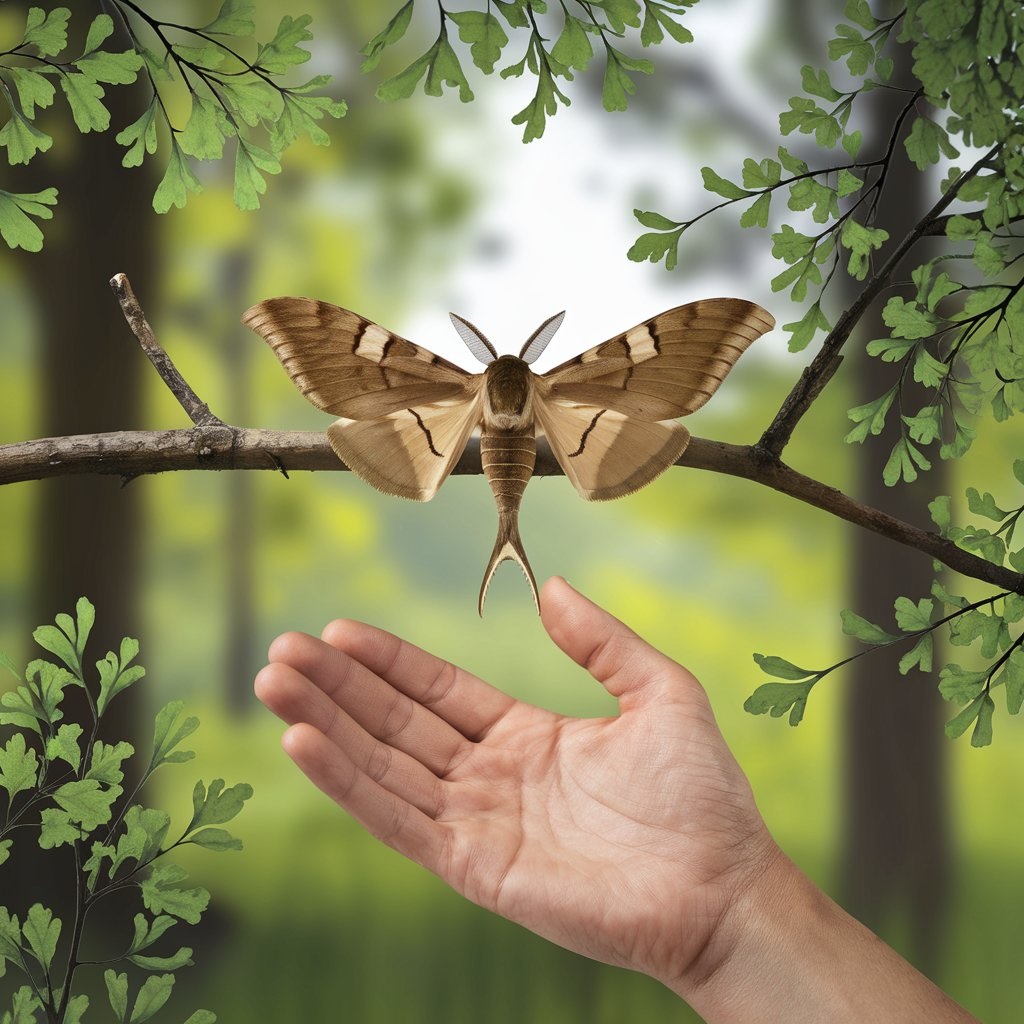
Key Features of Moths
- Scales on Wings: One of the most fascinating features of moths is the tiny, overlapping scales on their wings. These scales are responsible for the moth’s coloration and patterns, which help them camouflage and protect themselves from predators.
- Antennae: Unlike butterflies, which have slender, thread-like antennae, moths have feathery antennae. These antennae are crucial for their sensory functions, especially in detecting pheromones—chemical signals used for communication, especially during mating.
- Metamorphosis: Moths undergo a complete metamorphosis, transforming from eggs to larvae (caterpillars), then to pupae (cocoons), and finally to adult moths.
These insects are nocturnal by nature, meaning they are most active during the night. Their wings come in a wide variety of shapes and sizes, ranging from tiny, brownish moths to large, vividly colored species like the Atlas Moth, which boasts a wingspan of up to 12 inches.
Can Moths Attack Humans?
Now, let’s get to the heart of the question: Do moths attack humans? The answer, without a doubt, is no—moths do not attack humans.
What Does It Mean for Moths to “Attack”?
To “attack” implies an intentional, harmful action. Moths, however, are not capable of such behavior. They are not aggressive creatures and do not seek out confrontation with humans. Their natural instincts are focused on survival, reproduction, and navigating their environment, not on attacking anything.
So Why Do People Think Moths Attack?
Despite being harmless, there are several reasons why people might think moths are attacking them:
- Erratic Flight Patterns: Moths have a reputation for flying erratically. They seem to dart around unpredictably, sometimes flying straight toward humans. This behavior, however, is not an attack; it’s simply how they navigate. Moths are drawn to light sources (more on that in a bit) and may end up flying in a straight line toward a person if they are near a light source.
- Attraction to Light: Phototaxis, or the attraction to light, is a well-known moth behavior. Moths use natural light sources like the moon for navigation, but artificial lights confuse them. When they are drawn to bright lights in your home, it may appear as though they’re targeting you, but they are simply responding to the light, not you.
- Defensive Maneuvers: When moths feel threatened or are in danger, they might react defensively. Some species can release clouds of scales from their wings to confuse predators. This can be alarming if you happen to be near one of these moths, but it’s a defensive tactic, not an attack.
- Curiosity and Proximity: Moths are often curious about their surroundings. If they fly near a human, it’s not to cause harm, but rather because they are investigating their environment—perhaps a new source of light or heat. They do not perceive humans as threats, and therefore, do not approach with aggressive intentions.
Moth Anatomy: The Truth Behind Their Capabilities
To better understand why moths don’t attack humans, it’s important to look at their physical makeup. Moths simply lack the tools to be aggressive in any meaningful way.
1. No Biting or Stinging Mechanisms
Unlike other insects, such as bees or wasps, moths do not have stingers or biting mouthparts. Their mouthparts are adapted for feeding on nectar, not for attacking or defending. Moths’ adult forms generally do not feed at all, especially the adult moths that have passed through the pupal stage. They rely on stored nutrients from their larval stages.
2. Fragile Wings
Moths have delicate wings covered in tiny scales. These wings are designed for flight, not for combat or defense. The scales, which give moths their distinctive patterns, can be shed during flight if the moth feels threatened. While these scales may be a nuisance to some, they are not harmful to humans in any significant way.
3. Lack of Venom or Poison
Moths are not venomous. Many species of insects, such as spiders, snakes, and certain beetles, can pose a danger to humans due to venom or toxins. Moths, on the other hand, do not have any form of venom to inject or defend themselves with. Their only defense is their ability to confuse predators through evasive maneuvers or the release of scales.
4. Gentle Flight Patterns
Moths are not designed to attack. Their wings are adapted for gentle, gliding flight, which allows them to move from one area to another in search of food or mates. They are not built for speed or aggressive action, and their flight patterns are typically erratic, not aimed at specific targets like humans.
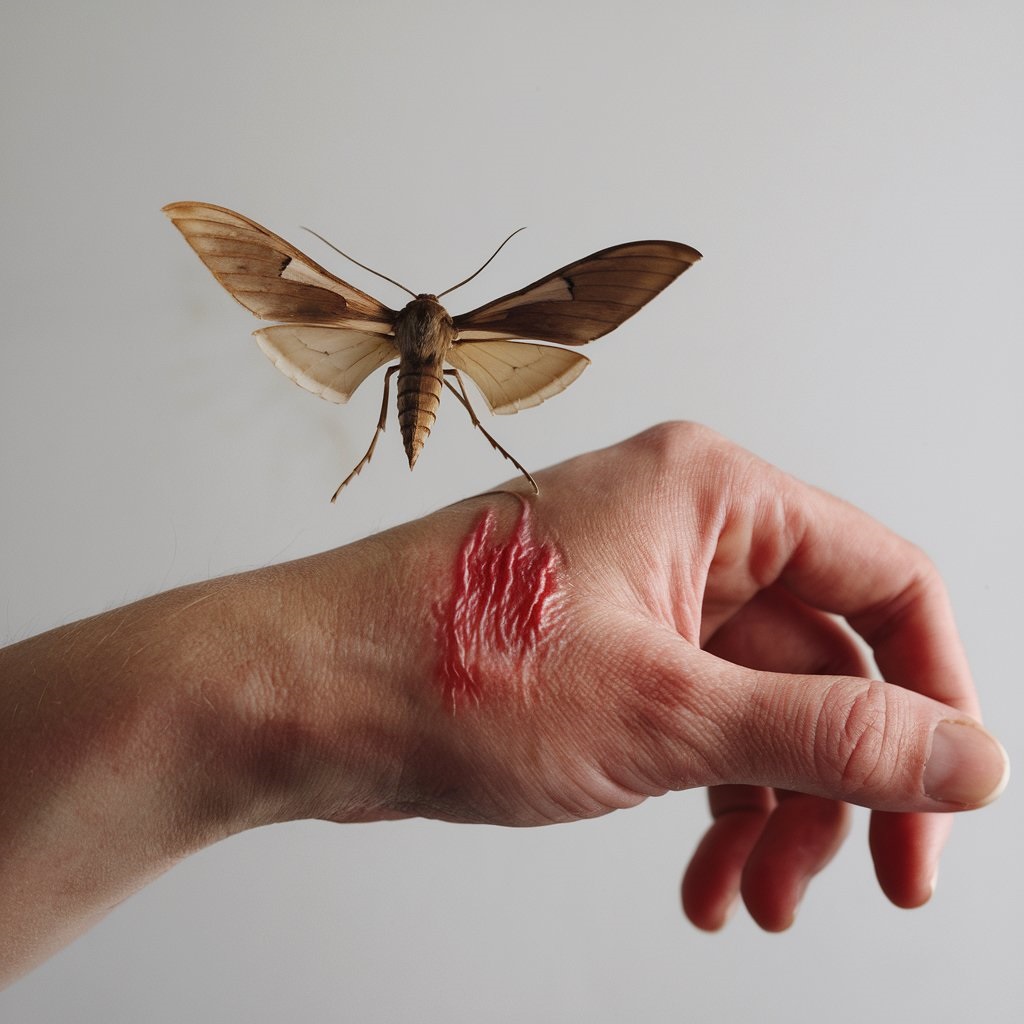
Moths and Humans: The Connection
While moths may not attack humans, they are still a part of our world. Moths and humans often share spaces, and their presence can sometimes cause concern. However, it’s essential to understand that moths are usually harmless and serve various ecological purposes.
Moths and Light: The Attraction to Artificial Illumination
The attraction of moths to light is one of the most well-known aspects of their behavior. But why do they do this?
Phototaxis: Why Moths Are Drawn to Light
Phototaxis is the term used to describe the phenomenon where moths are attracted to light sources. This behavior likely evolved as a navigational aid. In the wild, moths use the moon and stars as a reference point to maintain a straight flight path. However, artificial light sources confuse their navigation system, causing them to fly in circular patterns or directly toward the light.
At night, moths rely heavily on light sources for orientation, which is why you might find them swarming around porch lights, street lamps, or even indoor lamps.
Heat and Scent: Other Factors Attracting Moths
Moths are also attracted to heat and scent. As warm-blooded creatures, humans emit heat, which can draw moths toward us. While they are not specifically attracted to humans, moths are more likely to fly near people due to the warmth and the various scents we emit (such as perfumes or food odors).
Are Moths Harmful to Humans?
The short answer is: No, moths are generally harmless to humans. However, certain species of moths can cause indirect harm in specific situations.
1. Fabric Damage by Moth Larvae
The most significant harm moths cause is often indirect—through the larvae, or caterpillars. Clothes moths, for example, are notorious for feeding on natural fibers, including wool, silk, and cotton. The larvae of these moths burrow into fabrics and feed on them, leaving holes and making garments unwearable.
Preventing Moth Damage:
- Use Cedarwood or Mothballs: These substances are natural repellents that can deter clothes moths from infesting your wardrobe. Cedarwood is a particularly popular and eco-friendly choice.
- Store Clothes Properly: Keeping woolen clothes and fabrics in airtight containers can help prevent moth larvae from reaching them.
2. Allergic Reactions to Moths
While moths themselves do not bite or sting, their presence can cause allergic reactions in some individuals. Moths shed tiny scales from their wings, and these scales can accumulate as dust in the air. For people sensitive to dust or allergens, these moth scales can cause respiratory issues, skin irritation, or allergic reactions.
If you experience these symptoms after encountering moths, it’s best to clean thoroughly and take steps to prevent further exposure to moths or their scales.
3. Food Contamination by Pantry Moths
Certain types of moths, such as pantry moths, can invade food storage areas. Their larvae feed on dry goods like flour, cereal, and grains, leading to contamination. If you find that your food is being eaten by larvae or covered in webs, it’s a sign that moths have infested your pantry.
Preventing Food Infestations:
- Seal Food Containers: To prevent pantry moths from contaminating your food, store all dry goods in airtight containers.
- Regular Inspection: Periodically check your pantry for signs of moths, such as webbing or larvae.
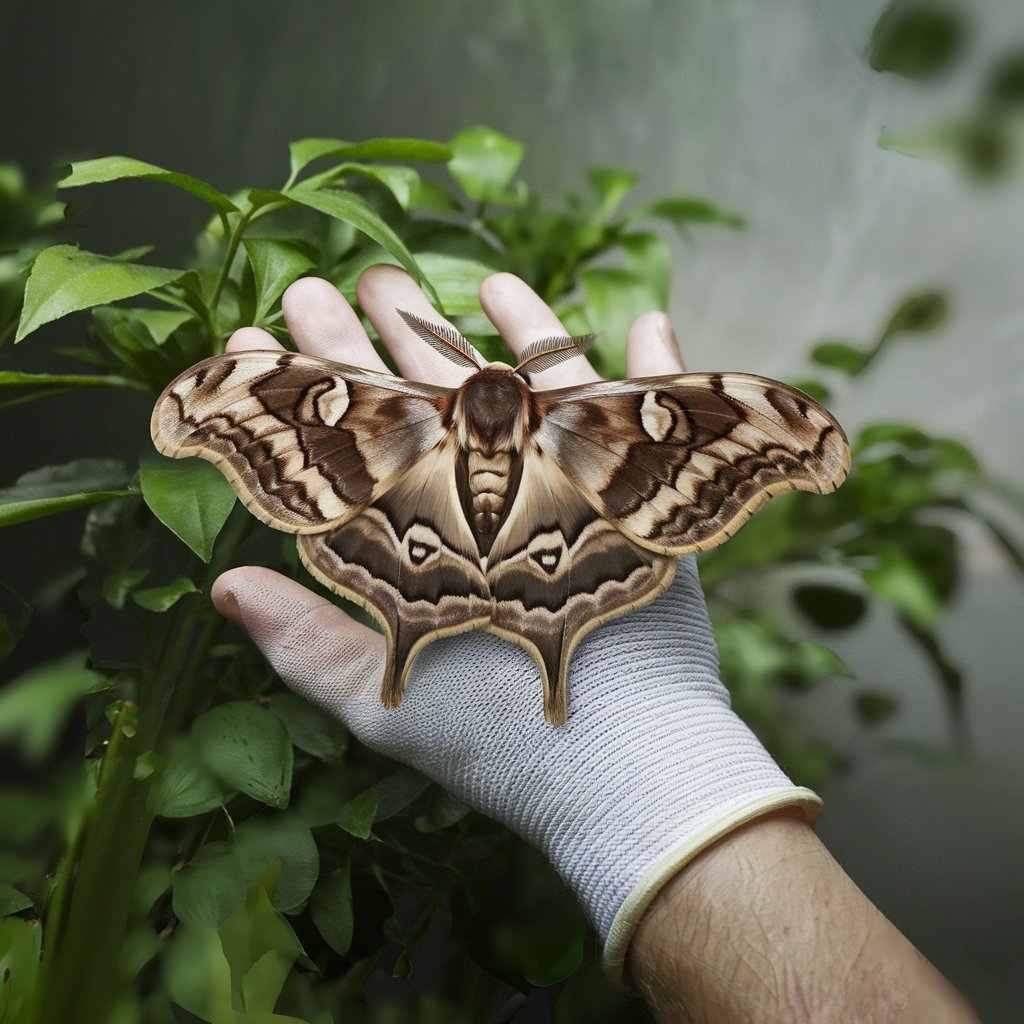
Myths and Misconceptions About Moths
Despite their gentle nature, there are many myths about moths. Let’s take a moment to clear up some of the most common misconceptions.
1. Moths Bite Humans
As previously discussed, moths do not bite. They lack the necessary mouthparts for biting, and their adult forms do not feed at all. Any sensation of being bitten is likely caused by another insect.
2. Moths Are Poisonous
Contrary to popular belief, moths are not poisonous. While some moth species may have evolved to have toxins in their larvae (such as in certain caterpillar species), adult moths do not pose any poisoning risk to humans.
3. Moths Are Specifically Attracted to Humans
Moths are not attracted to humans in particular. They are simply drawn to light, heat, and scent, and humans happen to be sources of those environmental factors. They are not actively seeking human interaction.
Preventing Moth Infestations
If you’re concerned about moths invading your space, there are several steps you can take to prevent them from entering your home:
1. Use Cedarwood or Mothballs
Cedarwood is a natural deterrent for moths, especially for clothes moths. Similarly, mothballs contain chemicals that moths find unpleasant and will avoid.
2. Reduce Light Pollution
Moths are strongly attracted to artificial lights. Using yellow “bug” lights that are less attractive to moths can help reduce the number of moths around your home.
3. Seal Entry Points
Check your home for gaps, cracks, or other openings where moths could enter. Sealing these areas can prevent moths from infiltrating your space.
4. Store Clothes and Food Properly
Use airtight containers for storing food and garment bags or containers for your clothes to keep moth larvae from causing damage.
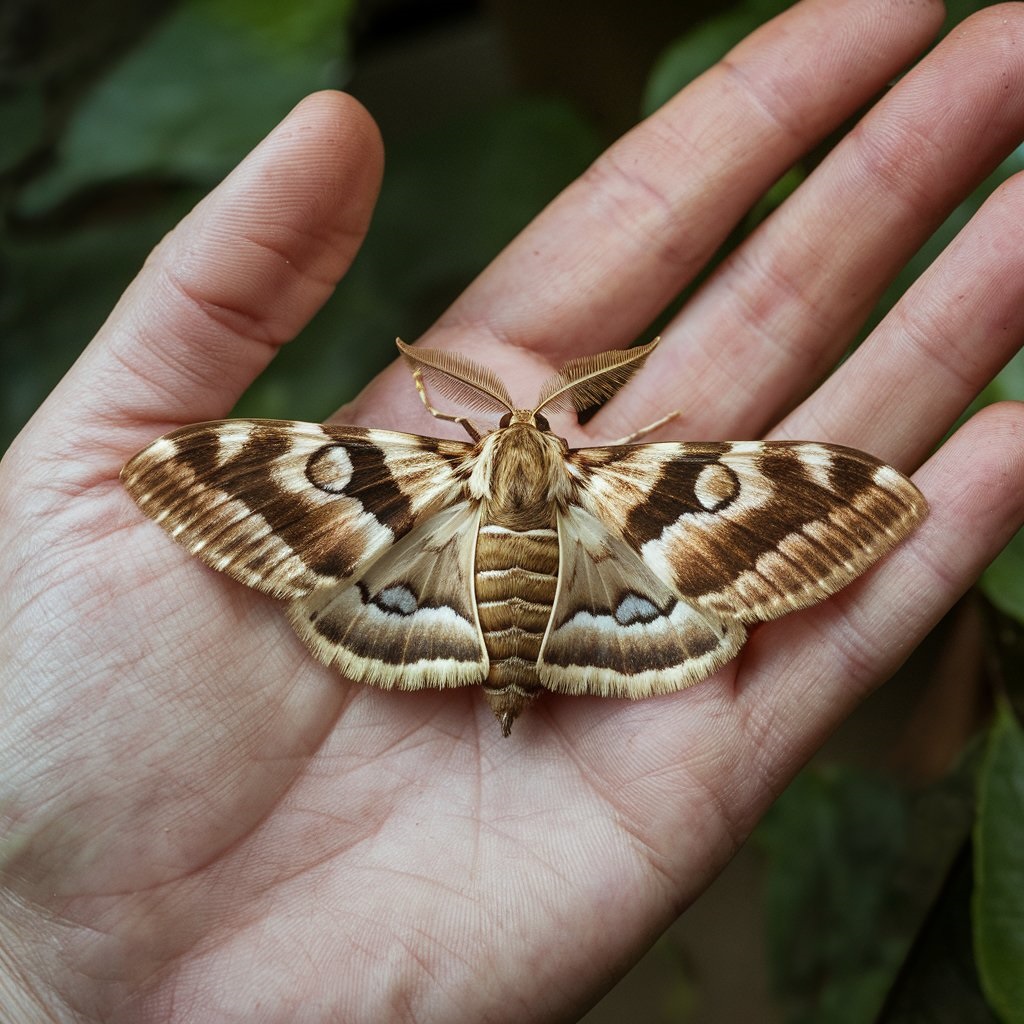
FAQs
1. Are moths aggressive?
Moths are harmless and not aggressive towards humans. They simply go about their business without trying to bite or sting, unlike other insects such as wasps or ants.
2. Is a moth in your room bad?
Moths themselves don’t harm you or your clothes, but their larvae can cause damage to fabrics. In the past, moth infestations led to the use of mothballs to protect clothing.
3. Why did moths attack me?
Moths don’t attack humans. If a moth seems to be flying toward you, it may just be attracted to light or trying to find a mate.
4. Do I need to wash all my clothes if I have moths?
Yes, it’s best to wash all clothing, especially those that haven’t been worn in a while, as moth larvae can hide in undisturbed garments.
5. Why do moths terrify me?
A fear of moths may stem from negative experiences or a general discomfort with their potential to damage personal belongings, like clothes.
6. Is it okay to pick up moths?
It’s better not to touch moths directly, as their wings are delicate. You can gently move them using a tool like a pencil to place them in a container.
7. Can I sleep if there is a moth in my room?
Moths in your room won’t harm you while you sleep, but their fluttering can be distracting. It’s best to remove them if you want a peaceful night.
8. Why do moths fly at your face?
Moths may be attracted to your face due to the heat and carbon dioxide you emit. While annoying, it’s not dangerous, although their “moth dust” can be unpleasant.
9. What kills moths instantly?
To quickly kill moths, wash containers with hot soapy water or freeze items for 72 hours to destroy eggs and larvae.
10. What if a moth visits you?
In some cultures, moths are symbols of transformation and endings. Their appearance may signify a time of change or the need to let go of something to move forward.
11. What smell do moths hate?
Moths dislike the smell of cedar, as well as herbs like lavender, rosemary, and thyme. Using these scents in bags or sachets can help keep them away from clothes and food.
12. How to get a moth out of your room quickly?
To encourage a moth to leave, turn off the light in your room, open the door, and turn on the light in another room. Moths are drawn to light and will usually fly toward it.
Conclusion
In conclusion, moths do not attack humans. These gentle, nocturnal creatures are more interested in finding light, heat, and food sources than in interacting with us. Moths are not aggressive and lack the physical traits required to pose a threat to humans. While they may cause some inconvenience through fabric damage or food contamination, they are not harmful to humans in the way many people fear.
Understanding their behavior and debunking common myths can help us coexist with moths peacefully. So, the next time a moth flies past you, remember: it’s just a curious insect following its instincts—no attack involved!
Read more knowledgeable blogs on Flowy Magazine

James Clair is a passionate writer and researcher with a deep fascination for animal behavior and its intricate connection to human life. With a background in [relevant field of study, e.g., zoology, psychology, ethology], James has spent years studying the natural world, focusing on how animals’ actions and instincts impact human emotions, behavior, and society.
His expertise in [specific topics or regions of focus, e.g., canine psychology, animal communication, wildlife conservation] has led to numerous published works and collaborations with renowned researchers and institutions. Through his work at Flawy Magazine, James aims to bridge the gap between scientific research and public understanding, offering insightful, accessible articles that explore the complex relationship between humans and animals.
When he’s not writing, James enjoys [personal hobbies or interests, e.g., hiking in nature, volunteering at animal shelters, photography] and is an advocate for [cause or charity related to animals or conservation]. His mission is to inspire readers to see animals not just as companions or creatures of the wild, but as beings whose behavior holds valuable lessons for us all.
